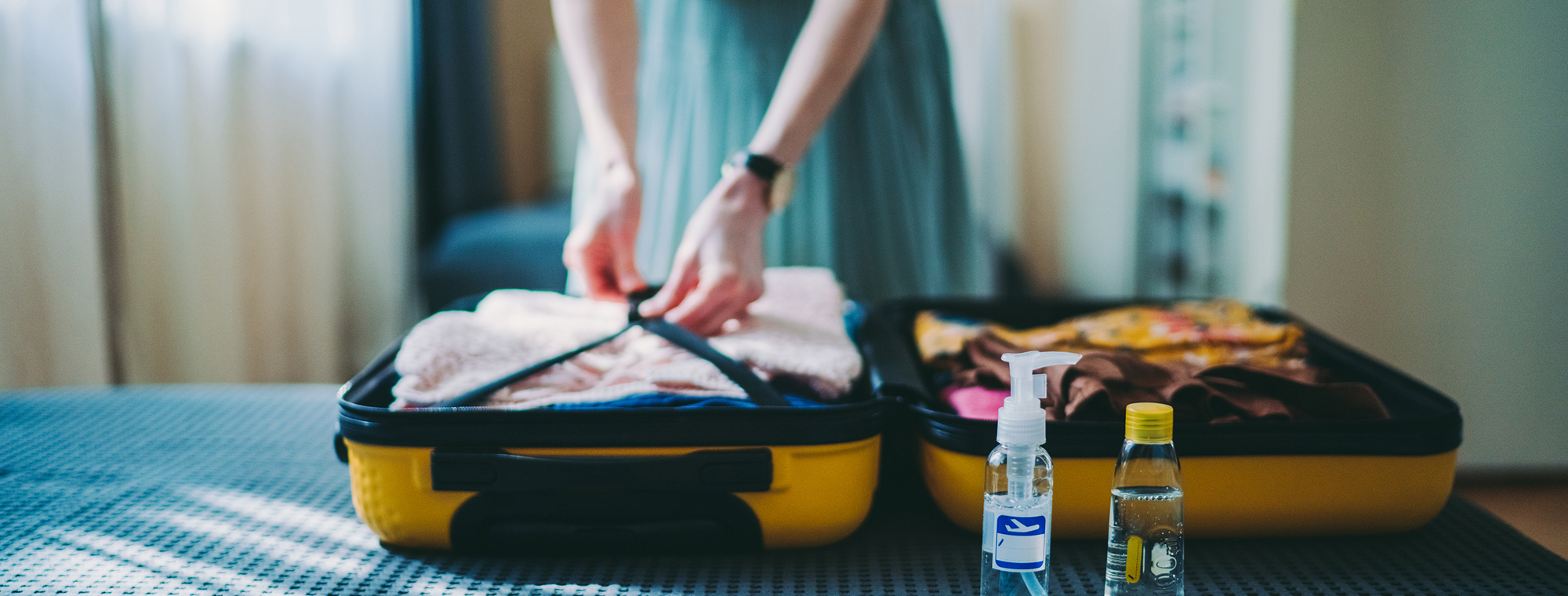TSA Liquid Limit
What Can I Bring?
What Can I Bring?

Current TSA Liquid Limits & Rules
When it comes to flying, one of the most common—and often misunderstood—rules enforced by the Transportation Security Administration (TSA) is the restriction on liquids in carry-on luggage. Whether you're a seasoned globetrotter or a first-time flyer, understanding the TSA’s liquid limits is crucial for a smooth security screening process. Here’s everything you need to know, along with practical tips from travel experts.
The 3-1-1 Rule Explained
At the heart of the TSA liquid policy is the 3-1-1 rule:
- 3: You can carry liquids, aerosols, gels, creams, and pastes in containers of 3.4 ounces (100 milliliters) or less.
- 1: All containers must fit into a 1 quart-sized, clear, resealable plastic bag.
- 1: Each passenger is allowed one such bag.
This rule applies to carry-on luggage only. You’re free to pack larger liquid quantities in your checked baggage (with exceptions for certain hazardous materials).
What Are the TSA Liquid Limits?
TSA liquid limits refer to the maximum amount of liquids, gels, and aerosols that travelers are allowed to bring in their carry-on baggage. The limit is 3.4 ounces (100 milliliters) per container.
What Carry-on Items Are Included in the TSA Liquid Limits?
The definition of “liquid” is broader than many travelers expect. According to TSA, liquids include:
- Water and other beverages
- Lotions and creams
- Oils
- Perfumes
- Sprays
- Gels (e.g., hair gel, hand sanitizer)
- Foams
- Pastes (e.g., toothpaste)
- Soups and sauces
Even peanut butter and mascara fall under this category. If it can pour, smear, or spread, it likely counts as a liquid.
The following items are exceptions to the TSA liquid limits:
- Medications: You can bring medically necessary liquids, gels, and aerosols in reasonable quantities exceeding 3.4 oz. Declare them at the checkpoint.
- Infant and child nourishment: Formula, breast milk, and juice for babies and toddlers are permitted in larger quantities.
- Duty-free purchases: Liquids purchased after clearing security (or sealed in tamper-evident bags at international duty-free shops) are generally allowed.
How to Pack Your Carry-on Liquids for Your TSA Screening
All liquids, gels, and aerosols must be placed in a single, clear, quart-sized, plastic zip-top bag. Each traveler is allowed one such bag per carry-on. The bag must be placed in a bin or conveyor belt for X-ray screening.
If you bring more than the allowed amount of liquids in your carry-on baggage, they will be confiscated by TSA agents at the security checkpoint. If you are unsure how many liquids you can bring, it's best to pack them in your checked baggage.
You can bring alcohol in your carry-on baggage, but it is subject to the TSA liquid limits. Alcohol purchased after clearing the security checkpoint can be brought on board the plane.
TSA Liquid Limits in Checked Baggage
There are no restrictions on the amount of liquids, gels, and aerosols that you can pack in your checked baggage. However, it's important to ensure that these items are packed securely and won't leak or spill during transport.
Can you pack alcohol in checked baggage?
Yes, you can pack alcohol in your checked baggage. However, there are some restrictions on the amount of alcohol you can bring. You are allowed to bring up to 5 liters of alcohol with an alcohol content of between 24% and 70% per person in checked baggage. Alcohol with an alcohol content of less than 24% is not subject to these limitations.
How should you pack liquids in checked baggage?
When packing liquids, gels, and aerosols in checked baggage, it's important to take steps to prevent leakage and breakage. Here are some tips:
- Use travel-sized containers for liquids, and ensure that they are tightly sealed.
- Wrap fragile items in bubble wrap or other protective materials to prevent breakage.
- Place liquids and other items in sealed plastic bags to contain any spills.
- Pack liquids and other fragile items in the center of your suitcase, surrounded by soft items like clothing, to provide cushioning.
Common Mistakes to Avoid
-
Bringing full-size toiletries: A 6 oz bottle of shampoo isn’t allowed, even if it’s half-empty.
-
Forgetting to separate your liquids: This can delay your screening and may lead to confiscation.
-
Ignoring regional differences: While the TSA governs U.S. airports, other countries may have similar—but not identical—rules.
It's important to note that TSA regulations are subject to change, so it's always a good idea to check the TSA website or contact the airline directly for the most up-to-date information.
Frequently Asked Questions About TSA Liquid Limits
Each passenger is limited to one quart-size bag of 3.4-ounce containers of liquids, gels, and aerosols.
Yes. It's on the list of limited items. The TSA liquid limits apply to all liquids, gels, and aerosols.
Yes. For makeup items, any mascara, nail polish, or perfume must be in no larger than a 3.4-ounce container.
As many as fit into a quart-size bag.
Specific rules and regulations may vary depending on the airline, destination, and other factors. It's always best to check with your airline or the relevant authorities for the most up-to-date information. Here are some items that are generally not allowed in checked luggage:
- Explosive materials, including fireworks, dynamite, and blasting caps
- Flammable materials, including gasoline, propane, and lighter fluid
- Compressed gases, including butane and propane
- Corrosive materials, including acids and batteries with acid
- Poisons and toxic substances, including pesticides and arsenic
- Radioactive materials, including medical isotopes and industrial radiography sources
- Magnetized materials, including strong magnets and compasses
- Firearms and ammunition (some airlines may allow these in checked luggage, but they must be declared and properly packaged)
- Lithium batteries that exceed a certain watt-hour rating (typically 100 watt-hours)
- Perishable items, including fresh fruit and vegetables, meat, fish, and dairy products (these may be allowed in limited quantities if properly packaged)
Again, this is not an exhaustive list, and the specific rules may vary. If you are unsure about whether an item is allowed in checked luggage, it's best to check with your airline or the relevant authorities.
Specific rules and regulations may vary depending on the airline, destination, and other factors. It's always best to check with your airline or the relevant authorities for the most up-to-date information. Here are some items that are generally allowed and not allowed on airplanes:
Allowed items:
- Clothing and personal items, including coats, hats, and umbrellas
- Prescription medications and medical devices, including syringes and oxygen tanks
- Mobile phones, laptops, and other electronic devices (these must be turned off during takeoff and landing)
- Food and drinks (these may be subject to restrictions on international flights)
- Lighters and matches (these may be allowed in limited quantities but not in checked luggage)
Not allowed items:
- Explosive materials, including fireworks, dynamite, and blasting caps
- Flammable materials, including gasoline, propane, and lighter fluid
- Compressed gases, including butane and propane
- Corrosive materials, including acids and batteries with acid
- Poisons and toxic substances, including pesticides and arsenic
- Radioactive materials, including medical isotopes and industrial radiography sources
- Magnetized materials, including strong magnets and compasses
- Firearms and ammunition (some airlines may allow these in checked luggage, but they must be declared and properly packaged)
- Knives and other sharp objects (with some exceptions for medically necessary items)
- Sporting equipment that can be used as a weapon, including baseball bats and hockey sticks
This is not an exhaustive list, and the specific rules may vary. If you are unsure about whether an item is allowed on an airplane, it's best to check with your airline or the relevant authorities.











